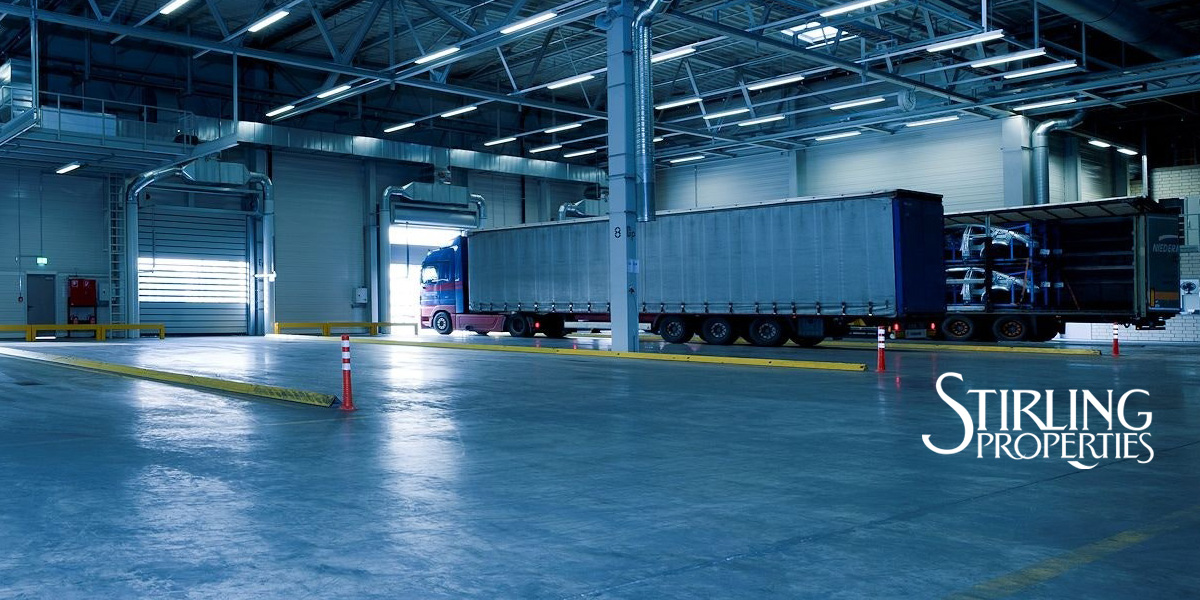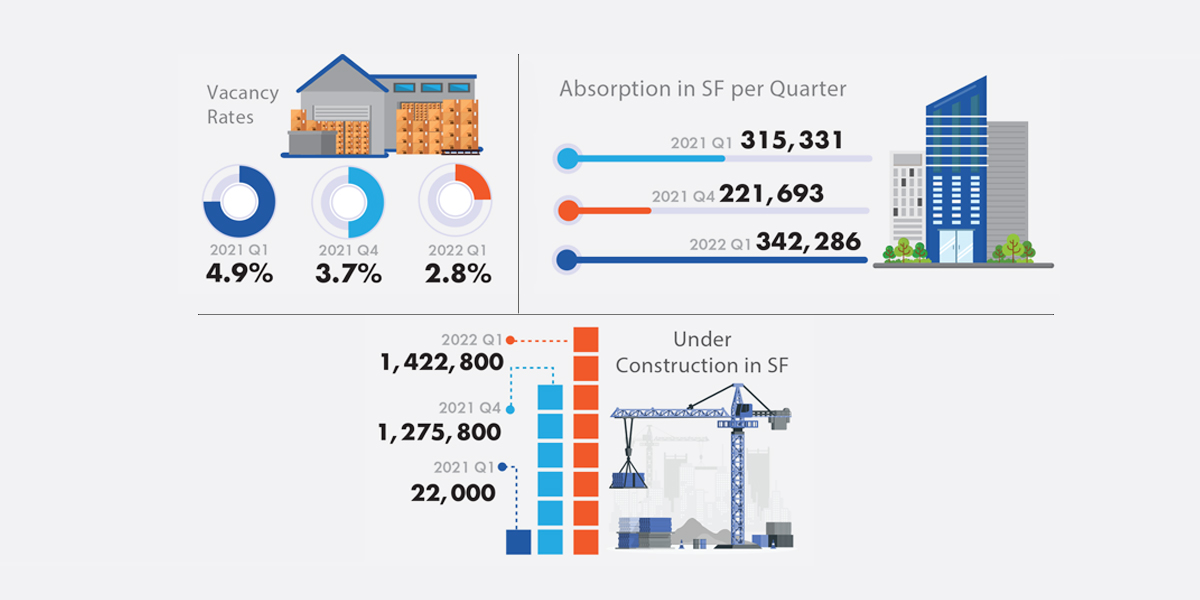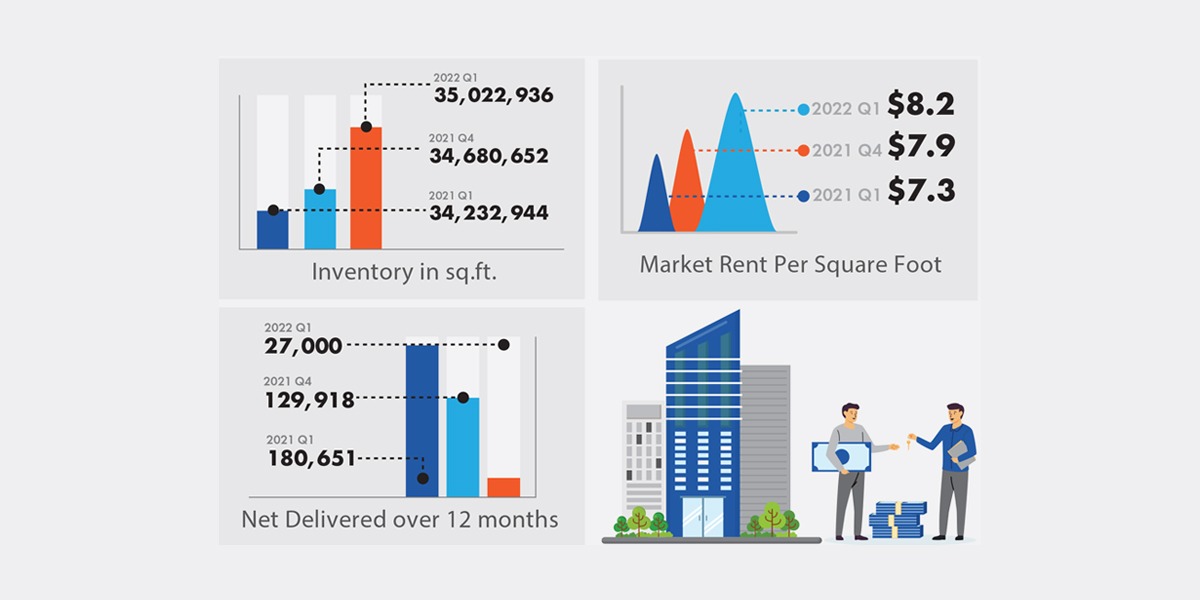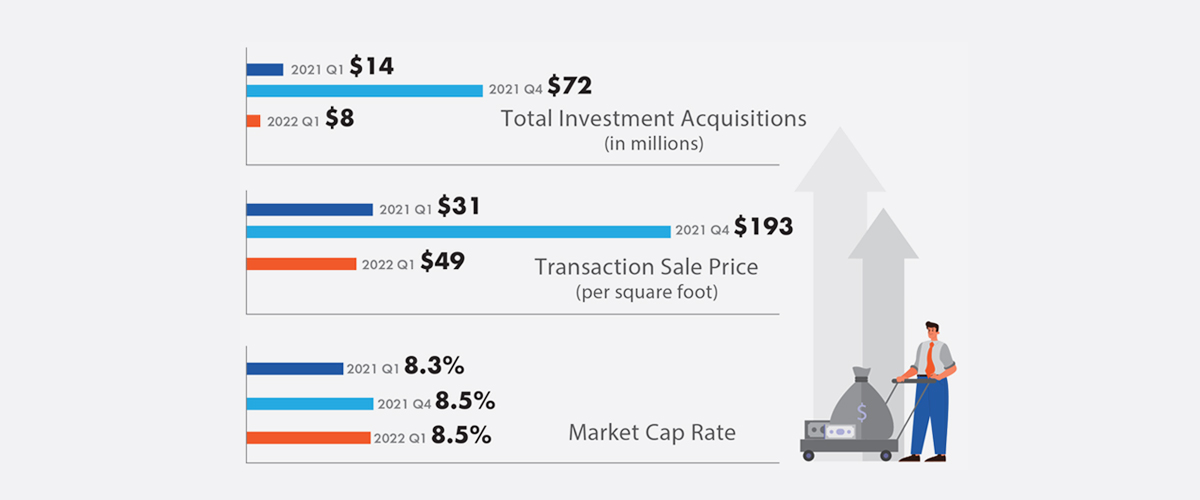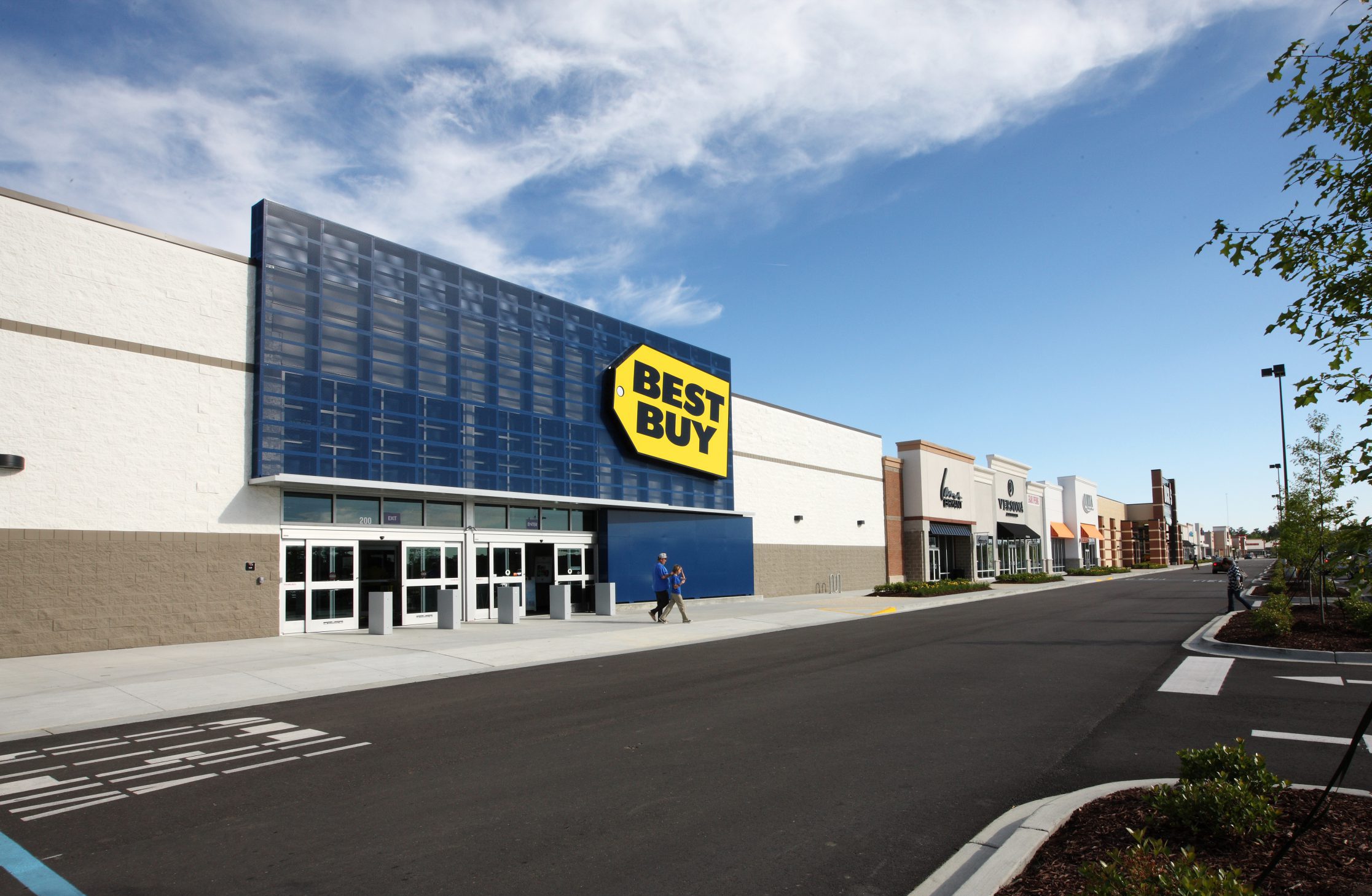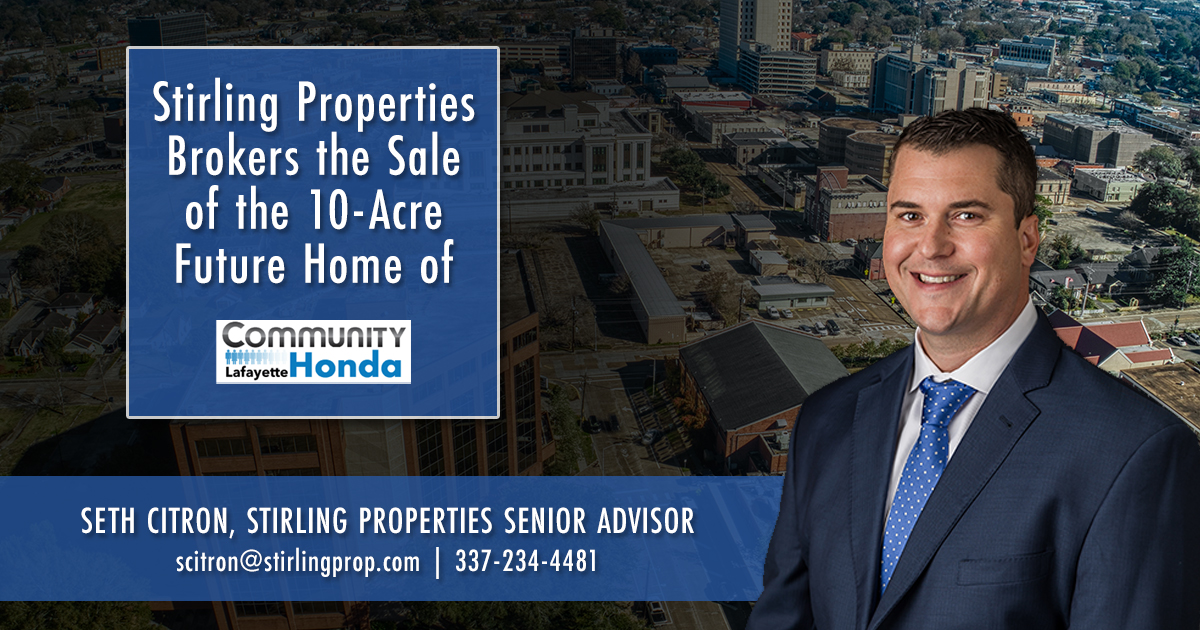Baton Rouge Industrial Market Insights
The industrial sector continues to be a bright spot in the Baton Rouge commercial real estate landscape, despite concerns around rising interest rates, surging inflation, and economic uncertainty. Key fundamentals are strong, including low vacancy rates, rising market rent rates, and decreasing cap rates.
Today’s sky-rocketing e-commerce sales, coupled with recent supply chain issues, have significantly increased the demand for warehouse and distribution facilities across the country. However, like most markets, the Baton Rouge area does not have an abundance of industrial space available for sale or lease. Scarcity is driving demand for these properties up, as well as transactional sale prices. Inventory is increasing, but not fast enough to meet demand. Here’s a more in-depth look at what’s happening in the Baton Rouge Industrial Market.
INDUSTRIAL MARKET DEMAND
Vacancy Rates:
- Vacancy rates for industrial space in the Baton Rouge market are typically lower than the national average and have consistently decreased since early last year.
- This low vacancy rate can be attributed to supply not keeping pace with demand. Historically, we haven’t had much speculative development in our market—any new construction is usually build-to-suit.
- In that trend, specific-use industrial properties are currently being built by national developers, and I believe this could cause an increase in vacancy over time. For instance, distribution space, which has not historically been a high-profile property type in our industrial market, has gained in popularity across the country, and we’re starting to see more distribution space come online here.
INDUSTRIAL MARKET SUPPLY
Inventory:
- The total square footage of inventory for industrial space in Baton Rouge is slowly increasing, though we are building more space relative to inventory than nationally.
- However, most of the new inventory coming online is earmarked—we do not see any speculative space for startups or new companies entering our market. So, inventory is increasing, but not fast enough to meet the demand.
Market Rent:
- Market rents per square foot for industrial space in Baton Rouge are steadily increasing, and our rental rates are rising faster than nationally. According to a recent report by the National Association of REALTORS (NAR), in the first quarter of 2022, market rent growth increased 11.7% from the previous year.
- The most significant factor driving up rental rates is the surge in construction costs. The cost of construction is, on average, 30% higher than it has been over the last couple of years, and I don’t see any sign of that coming down anytime soon.
- Moving forward, I think we will see a continued trend of rental rates increasing for a short period until the supply chain issues get resolved. Then we’ll see some stabilization.
INDUSTRIAL MARKET SALES TRANSACTIONS
Prices:
- Transaction sale prices per square foot for industrial space in Baton Rouge have been increasing over the past year and rising faster than the national average.
- One reason we’re seeing this record pricing—and it depends if we’re talking about vacant owner-occupied versus investment industrial properties—is the national demand for investment properties as a hedge against inflation. The other reason is simply a lack of supply.
- Also, money was cheap up until recently, so tenants became buyers. They were willing to pay more because of a lack of supply and took whatever space they could get. So, I think that’s a significant factor in why we see price increases.
- Looking ahead, I think we’ll see some stabilization in pricing. I don’t think it will continue to increase as we’ve seen. Interest rates have much to do with that, and banks’ willingness to lend money pushed prices up over the past year.
Cap Rates:
- According to NAR data, cap rates for industrial space in Baton Rouge have been inching up over the past year, and our cap rates are consistently higher than nationally.
- If you look at the data, rates have reportedly increased from 8.3% to 8.5% over the past year, so it’s a modest increase. However, in my opinion, this data does not reflect what’s really playing out in our market. If anything, we’ve seen a reduction in cap rates, not an increase.
- If you are accounting for every transaction and including every industrial property type, perhaps it might reflect an increase, but for the most part, the cap rates I’ve seen have been in the low eights or high sevens. For higher-quality industrial properties, I’ve seen cap rates from 6% to as low as 5.75%. It could simply be when this snapshot was taken that higher quality properties were not selling, or maybe the older and functionally obsolete properties that sold during this time are pulling the average market cap rate up.
- I think a bit of the exuberance of out-of-state investors will subside, and rising interest rates will affect that. But there’s still a lot of money out there, a lot of transactions going on, and a lot of people that wanted to defer doing exchanges. So, the days of the nine and ten percent cap rates are long gone.
For more information on the Baton Rouge industrial market or commercial real estate in the area, feel free to reach out to one of our experienced advisors or me.
Download the entire Baton Rouge Industrial Market Report
(Sources of data used: CoStar®, US Census Bureau, US Bureau of Labor Statistics, and US Bureau of Economic Analysis.)
Steve Legendre, CCIM
Regional Vice President
(225) 329-0295 / slegendre@stirlingprop.com
Learn more about Steve Legendre, CCIM
Commercial Real Estate Outlook: Optimism Amidst Uncertainty
ICSC Las Vegas returned this spring—with a new format and brand—after a three-year hiatus due to the COVID-19 pandemic. Attendees and exhibitors rebounded, with higher than anticipated crowds; reported attendance was over 22,000.
Optimism was abuzz, and the pure excitement of being back to in-person events. However, uncertainty still lingered on the minds of many due to ongoing pandemic effects and economic and social unrest. We caught up with a few Stirling Properties team members who made the show to get insight into what’s happening in the retail industry.
Sky-rocketing construction costs vs. rents: One of the most significant issues we’re facing is the cost of deals for the landlord vs. what retailers are willing to pay for the space. “Retailers are expanding, but high labor and material costs remain challenging. Retailers are unwilling to pay more rent than they have historically; however, their box costs 50%+ more to build,” said Darryl Bonner, Senior Advisor. Right now, in many cases, rents don’t justify the cost of construction to make deals work. The imbalance is causing frustration on both sides and a pause in dealmaking. Still, many industry professionals believe this will work itself out with further correction of supply chain issues and compromises in building requirements/needs from retailers.
Inflation: The increased cost of goods and services undoubtedly affects how and what consumers buy. But so far, overall retail sales have not slowed much, coming off record sales numbers in 2021. As the pandemic began to wane and government subsidies trickled in, we saw a massive sales spike—what some call ‘revenge spending.’ But will this continue long term, with gas and grocery prices steadily ticking up?
People are still spending; they’re just spending differently. According to Rhonda Sharkawy, Senior Retail Leasing & Development Advisor, “There was so much movement around the pandemic; I think we are still seeing the settling effect. I believe sales reports will soften within the next year, and we will see where and how consumers are spending,” said Sharkawy.
Most retail brands remain optimistic. Even though their profits are eroded because of increased costs, they remain bullish on top-line revenue growth. Many believe this is a short-term economic issue that should not incite knee-jerk reactions. Chris Abadie, VP and Manager of Commercial Brokerage, noted, “Despite concerns about inflation and rising interest rates, risk tolerance seems higher than before.”
Retail shifts: Consumer demands have evolved over the last couple of years. But one thing holds—consumers want it all, and they want it now. As a result, convenience, speed, and multiple buy-and-collect options are paramount to the success of today’s retailers.
“The overall sentiment is that retailers are confident; they are stronger than ever, and they are investing in brick-and-mortar stores. Although consumers want options, they still want a physical store where they can see and touch the product and enjoy social interaction. Online sales are surging, but for many retailers, ecommerce is serving as another touch point or means for increasing store sales,” said Sharkawy. Moving forward, retailers will continue to invest in the shopping experience. We expect more experimentation with store layouts, formats, and product inventory.
The function of the retail center itself is also shifting. Bonner noted, “Most retail deals are now a mix of uses, with retail usually the second or third tier. Multifamily has become the new retail anchor, with medical not far behind.” In addition, we’re seeing more nontraditional tenants and service concepts filling shopping centers.
Technology: “Technology is finally having its moment in our industry,” said Abadie. For years, retailers have been pumping money into technology, targeting their customers and their specific wants and needs. Now, the commercial real estate industry can too.
From a retail/asset management perspective, technology integration helps with staffing, inventory, purchasing, and fulfillment. It is also emerging in building systems, using big data to help with environmental, social, and governance (ESG) efforts, and lowering the carbon footprint of commercial real estate.
Promising tech companies such as Placer.ai, Crexi, and Buildout are becoming industry standards. As CRE practitioners, new technology is helping us analyze the health of retailers and shopping centers. It’s also assisting us to better understand a store’s value through foot traffic vs. online sales vs. physical sales and how people are utilizing the store. However, the real game-changer is emerging tech that can use data and algorithms to identify new locations and market gaps and even project retail sales for future retailers. Emerging technologies will continue to develop and have drastic impacts on our industry moving forward.
Numerous headwinds affect consumer sentiment and spending, but it’s still a glass-half-full outlook. Those retailers that were successful and survived COVID are bullish on the future. The overall attitude coming out of ICSC Las Vegas this year was our industry has faced insurmountable challenges, and we are now better prepared to handle more adversity—so, how do we move forward? We’re all looking forward to continued momentum and more face-to-face interactions.
All-new Community Honda coming to Lafayette, Louisiana
Stirling Properties brokered sale of 10-acres for new facility.
Community Honda recently announced plans for an all-new state-of-the-art facility in Lafayette, Louisiana.
The 10-acre future home of Community Honda is located along Highway 90 near the airport. It will include a 50,000-square-foot facility with over 30 service bays, a children’s play area, a café, and many more amenities.
“After three years in Lafayette, we are excited to expand our presence to better serve the community,” said Roger Elswick, Community Honda owner.
Seth Citron, Stirling Properties senior advisor, brokered the transaction and worked with Community Honda to secure the new location. “This was a great project to work on, and I’m excited for Roger and Kim Elswick’s entire Community team. This will be a remarkable new development that will service their loyal employees and customers for the next generation of Honda products in and around the Acadiana area. I’m eager to see this property returned to commerce and provide an enhanced economic boost for the market,” said Citron.
With construction set to begin in 2022, the new facility is expected to open in 2023 and will be the first in Louisiana to use Honda’s newest designs.
For leasing information in southwest Louisiana, contact Seth Citron at scitron@stirlingprop.com / 337-572-0273.

